Grow Beetroot on Terrace: Imagine stepping onto your terrace and harvesting vibrant, earthy beetroot, fresh from your own urban garden! It’s easier than you think, and this DIY guide will show you exactly how to make it happen. For centuries, beetroot has been celebrated not just for its delicious flavor, but also for its incredible health benefits and striking color. From ancient Roman times, where it was used medicinally, to its modern-day popularity in salads and juices, beetroot has a rich and fascinating history.
But why should *you* learn to grow beetroot on terrace? Well, for starters, homegrown beetroot tastes infinitely better than anything you can buy in the store. Plus, you’ll know exactly what’s gone into growing them – no nasty chemicals or pesticides! In today’s world, where we’re all looking for ways to eat healthier, connect with nature, and reduce our environmental footprint, terrace gardening is the perfect solution. This DIY guide will provide you with simple, step-by-step instructions, clever hacks, and insider tips to ensure a bountiful beetroot harvest, even if you’re a complete beginner. Let’s get started!
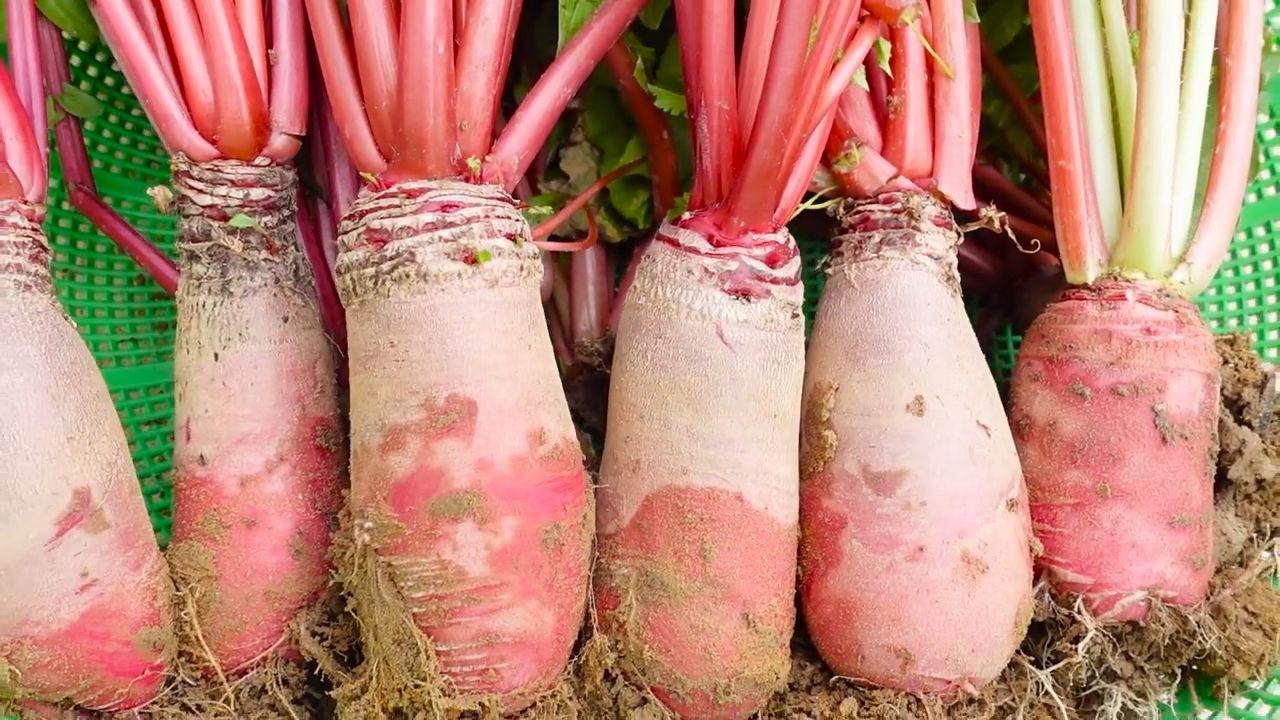
rowing Beetroot on the Terrace: Your DIY Guide for a Bountiful Harvest!
Hello dear garden friends! I love harvesting fresh vegetables directly from my terrace. And beetroot is right at the top of the list! It’s not only super healthy but also incredibly versatile in the kitchen. In this article, I’ll show you how you can easily grow beetroot in pots or containers on your terrace. Don’t worry, it’s easier than you think!
What you need for growing beetroot on the terrace:
- Seeds: Choose a variety that is suitable for growing in pots. There are special cultivars that grow more compactly.
- Pots or containers: They should be at least 20-30 cm (8-12 inches) deep so the roots have enough space to grow. Ensure good drainage!
- Soil: Use a high-quality vegetable potting mix. You can also mix your own (see below).
- Fertilizer: Organic fertilizer is ideal, e.g., compost or horn shavings.
- Watering can or hose: For regular watering.
- Spade or shovel: For filling the pots.
- Plant labels: So you know what you’ve sown where. (Believe me, you forget quickly!)
- Patience: Beetroot needs a bit of time to grow. But it’s worth it!
The Right Soil for Your Beetroot
Beetroot isn’t particularly demanding, but good soil is still important. You can either buy ready-made vegetable soil or create your own mix. I personally like to mix my own soil because then I know exactly what’s in it.
Here is my favorite recipe:
- 1/3 garden soil (if you don’t have any, potting soil works too)
- 1/3 compost (or well-rotted manure)
- 1/3 sand (for good drainage)
Mix everything well, and your perfect beetroot soil is ready!
Step-by-Step Guide: Sowing and Caring for Beetroot
Now let’s get down to it! Here is a detailed guide on how to successfully grow your beetroot on the terrace:
1. Preparing the Pots
- Clean the pots: Before you start, you should clean the pots thoroughly. This prevents the transfer of diseases or pests.
- Drainage: Fill a layer of gravel or expanded clay at the bottom of the pots. This ensures good drainage and prevents waterlogging. Beetroot doesn’t like wet feet!
- Fill with soil: Fill the pots with your prepared soil. Leave a few centimeters of space at the top.
2. Sowing the Beetroot
- Sowing time: Beetroot can be sown directly outdoors from April. If you want to start earlier, you can start the seeds indoors from March.
- Sowing depth: The seeds should be placed about 2-3 cm (about 1 inch) deep in the soil.
- Spacing: Ensure a distance of about 5-10 cm (2-4 inches) between the seeds. If you are sowing multiple rows, they should be about 20 cm (8 inches) apart.
- Number of seeds: Place 3-5 seeds per pot. If they all germinate, you can remove the weakest seedlings later.
- Watering: Gently water the soil after sowing.
3. Caring for the Beetroot
- Location: Beetroot loves the sun! Place the pots in a sunny spot on your terrace.
- Watering: Keep the soil evenly moist, but not wet. It’s best to water in the morning or evening when the sun isn’t so strong.
- Fertilizing: Fertilize the beetroot every 2-3 weeks with organic fertilizer. I like to use horn shavings or compost tea.
- Weeding: Keep the pots free of weeds. Weeds compete with the beetroot for nutrients and water.
- Thinning: If the plants are too close together, you should thin them out. Remove the weakest plants so the others have enough space to grow.
- Pest protection: Beetroot can be infested by various pests, e.g., flea beetles or aphids. Check the plants regularly and combat pests with natural remedies if necessary.
4. Harvesting the Beetroot
- Harvest time: Beetroot can be harvested as soon as the roots have reached the desired size. This is usually about 8-10 weeks after sowing.
- Harvesting: Carefully pull the roots out of the soil. If the soil is too dry, you can moisten it a little beforehand.
- Storage: Remove the greens and store the roots in a cool, dark place. They will keep for several weeks this way.
Common Problems and Solutions
Problems can also arise when growing beetroot on the terrace. Here are some of the most common issues and how you can solve them:
- Yellow leaves: This can be a sign of a nutrient deficiency. Fertilize the plants with an organic fertilizer.
- Small roots: This can have various causes, e.g., too little sun, too little water, or not enough fertilizer. Make sure the plants are getting enough sun, water, and nutrients.
- Pests: Check the plants regularly for pests and combat them with natural remedies if necessary.
- Diseases: Beetroot can be affected by various diseases, e.g., fungal diseases. Ensure good air circulation and avoid waterlogging.
Variety Recommendations for Pot Cultivation
Not every beetroot variety is suitable for growing in a pot. Here are some varieties that I can recommend:
- ‘Rote Kugel 2’: A classic variety with round, red roots.
- ‘Boltardy’: A very early variety that also grows well in cooler weather.
- ‘Chioggia’: An Italian variety with red-and-white striped roots. It looks great!
- ‘Golden’: A yellow variety with a mild taste.
Beetroot in the Kitchen: Versatile Uses
Beetroot is not only healthy but also incredibly versatile in the kitchen. You can eat it raw, cooked, roasted, or pickled. Here are a few of my favorite recipes:
- Beetroot salad: With goat cheese, walnuts, and a honey-mustard dressing.
- Beetroot soup: A classic that is warming and delicious.
- Beetroot chips: A healthy alternative to potato chips.
- Pickled beetroot: Perfect as a side dish or for salads.
Additional Tips for a Bountiful Harvest
- Starting indoors: To get an earlier harvest, you can start the seeds indoors from March.
- Companion planting: Beetroot gets along well with other vegetables, e.g., lettuce, radishes, or onions.
- Green manure: After the harvest, you can sow a green manure crop to improve the soil.
- Mulching: Mulch the soil around the plants to retain moisture and suppress weeds.
I hope this article has helped you to grow your own beetroot on the terrace. Good luck and a bountiful harvest! And remember: gardening is not just a hobby.
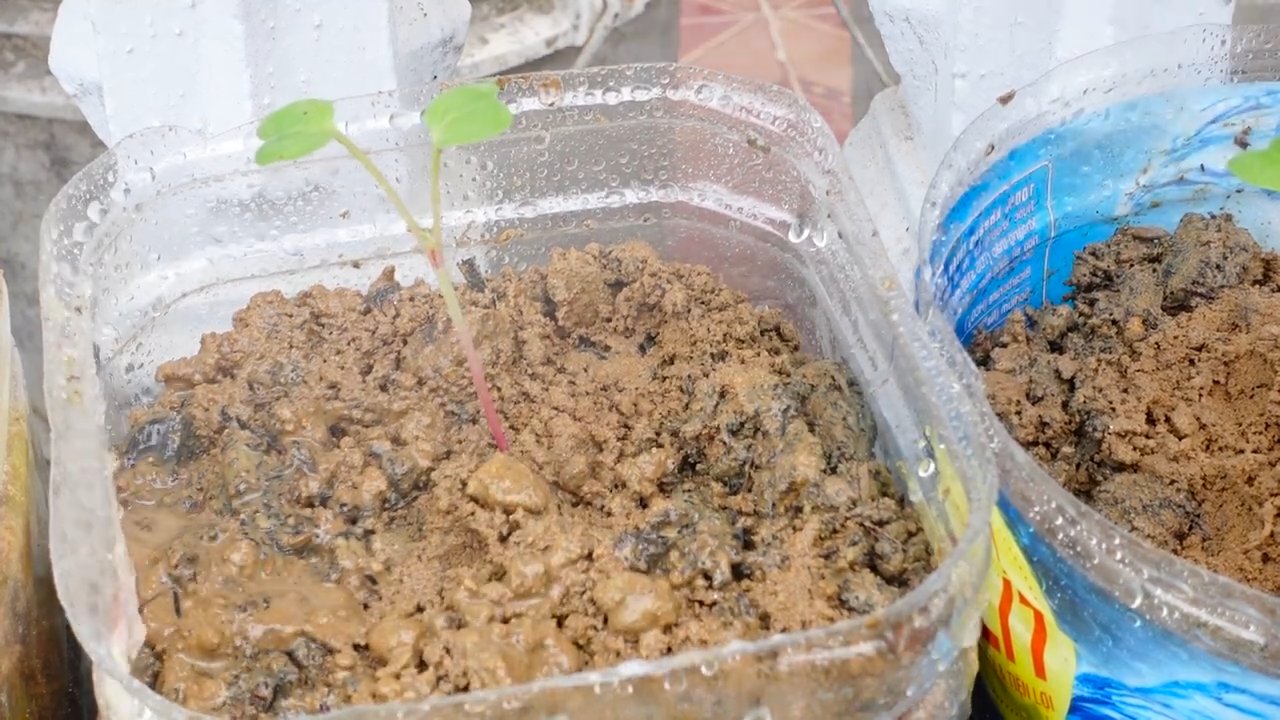
Conclusion
So, there you have it! Growing beetroot on your terrace is not only achievable but also incredibly rewarding. We’ve walked you through the process, from selecting the right varieties and preparing your containers to nurturing your plants and harvesting those vibrant, earthy jewels. But why should you bother with this DIY project when you can simply buy beetroot at the store? The answer lies in the unparalleled freshness, the satisfaction of nurturing something from seed to table, and the ability to control every aspect of its growth, ensuring organic, pesticide-free produce.
Think about it: store-bought beetroot often lacks the intense flavor and crisp texture of homegrown varieties. Plus, you’re limited to what’s commercially available. When you grow your own, you can experiment with heirloom varieties like ‘Chioggia’ with its beautiful candy-striped interior, or ‘Golden’ beetroot for a milder, sweeter flavor. Imagine adding these unique varieties to your salads, roasted vegetable medleys, or even pickling them for a vibrant and tangy treat.
Beyond the taste, consider the environmental benefits. Growing your own food reduces your carbon footprint by minimizing transportation and packaging. It also connects you to the natural world, providing a therapeutic and fulfilling hobby. Tending to your beetroot plants, watching them sprout and grow, is a mindful activity that can reduce stress and improve your overall well-being.
This DIY beetroot growing method is a must-try for anyone looking to add fresh, healthy, and flavorful produce to their diet while also enjoying the benefits of gardening.
But don’t stop there! Once you’ve mastered the basics, feel free to experiment. Try companion planting with herbs like rosemary or thyme to deter pests and enhance flavor. Consider succession planting, sowing new seeds every few weeks, to ensure a continuous harvest throughout the growing season. You can also explore different container sizes and materials to find what works best for your terrace environment.
And remember, growing beetroot on your terrace is a learning process. Don’t be discouraged if you encounter challenges along the way. Every gardener faces setbacks, but the key is to learn from your mistakes and keep experimenting.
We encourage you to take the plunge and start growing your own beetroot today. Share your experiences with us! Post photos of your beetroot plants on social media using #TerraceBeetroot or leave a comment below to let us know how it’s going. We’re eager to hear your tips, tricks, and triumphs. Happy gardening!
Frequently Asked Questions (FAQs)
What are the best beetroot varieties to grow on a terrace?
Choosing the right beetroot variety is crucial for success in container gardening. Shorter, round varieties like ‘Detroit Dark Red’, ‘Early Wonder’, and ‘Red Ace’ are generally well-suited for containers as they don’t require as much space for root development. ‘Baby Ball’ is another excellent choice for smaller containers. For those looking for something different, consider ‘Chioggia’ for its beautiful concentric rings or ‘Golden’ beetroot for its milder flavor and vibrant color. Remember to check the seed packet for specific recommendations regarding spacing and growing conditions.
How much sunlight do beetroot plants need on a terrace?
Beetroot thrives in full sun, requiring at least 6-8 hours of direct sunlight per day. However, if you live in a particularly hot climate, providing some afternoon shade can prevent the leaves from scorching. Observe your terrace throughout the day to identify the sunniest spots and position your containers accordingly. If your terrace doesn’t receive enough natural sunlight, you can supplement with grow lights.
What type of soil is best for growing beetroot in containers?
Beetroot prefers well-draining, fertile soil with a pH between 6.0 and 7.0. A good potting mix specifically formulated for vegetables is ideal. Avoid using garden soil, as it can be too heavy and compact in containers, hindering root development. You can also amend your potting mix with compost or well-rotted manure to improve drainage and nutrient content. Adding perlite or vermiculite can further enhance drainage and aeration.
How often should I water my beetroot plants on the terrace?
Watering frequency depends on several factors, including the weather, the size of your containers, and the type of potting mix you’re using. Generally, you should water your beetroot plants when the top inch of soil feels dry to the touch. Avoid overwatering, as this can lead to root rot. Water deeply and evenly, ensuring that the entire root zone is moistened. During hot, dry weather, you may need to water more frequently. Consider using a moisture meter to accurately assess the soil moisture level.
What are some common pests and diseases that affect beetroot plants, and how can I prevent them?
Beetroot plants can be susceptible to pests like aphids, flea beetles, and leaf miners. Diseases such as leaf spot and damping-off can also occur. To prevent these problems, start with healthy seeds and use a well-draining potting mix. Regularly inspect your plants for signs of pests or diseases. If you spot any problems, take action immediately. You can use organic pest control methods like insecticidal soap or neem oil to control aphids and flea beetles. Ensure good air circulation around your plants to prevent fungal diseases. Remove any infected leaves promptly to prevent the spread of disease. Companion planting with herbs like rosemary or thyme can also help deter pests.
When and how should I harvest my beetroot?
Beetroot can be harvested at various stages of maturity, depending on your preference. For baby beetroot, you can harvest them when the roots are about 1-2 inches in diameter. For larger beetroot, wait until the roots are 2-3 inches in diameter. To harvest, gently loosen the soil around the beetroot and pull it out of the container. You can also use a garden fork to lift the beetroot from the soil. Be careful not to damage the roots during harvesting. The greens are also edible and can be harvested at any time.
Can I grow beetroot in the same container as other plants?
Yes, you can companion plant beetroot with other vegetables and herbs. Good companions for beetroot include onions, garlic, lettuce, spinach, and radishes. These plants can help deter pests and improve the overall health of your beetroot plants. Avoid planting beetroot near pole beans or mustard, as these plants can inhibit their growth.
How can I improve the flavor of my homegrown beetroot?
The flavor of your homegrown beetroot can be influenced by several factors, including the variety you choose, the soil conditions, and the amount of sunlight it receives. Ensure that your beetroot plants receive adequate sunlight and are grown in fertile, well-draining soil. Adding compost or well-rotted manure to the soil can also improve the flavor. Avoid overwatering, as this can dilute the flavor. Harvesting your beetroot at the right stage of maturity is also important. Overripe beetroot can be tough and less flavorful.
What can I do with the beetroot greens?
Don’t discard the beetroot greens! They are highly nutritious and can be used in a variety of dishes. You can sauté them with garlic and olive oil, add them to salads, or use them in soups and stews. Beetroot greens are a good source of vitamins A and C, as well as iron and fiber.
How do I store harvested beetroot?
To store harvested beetroot, remove the greens, leaving about an inch of stem attached. Gently brush off any excess soil, but do not wash the beetroot. Store the beetroot in a cool, dark, and humid place, such as a refrigerator or root cellar. You can wrap the beetroot in a damp cloth or store it in a perforated plastic bag to help maintain humidity. Properly stored beetroot can last for several weeks.

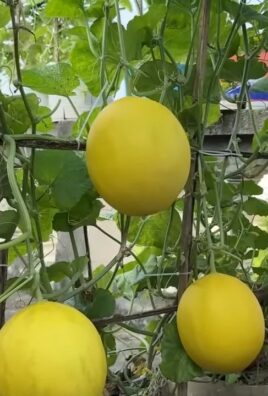
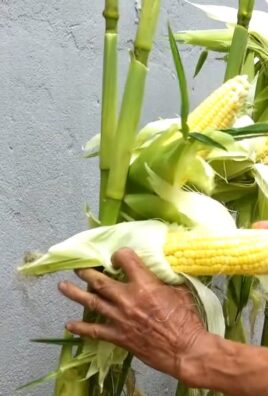
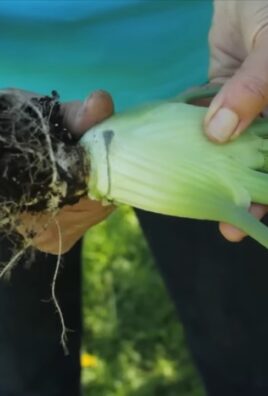
Leave a Comment